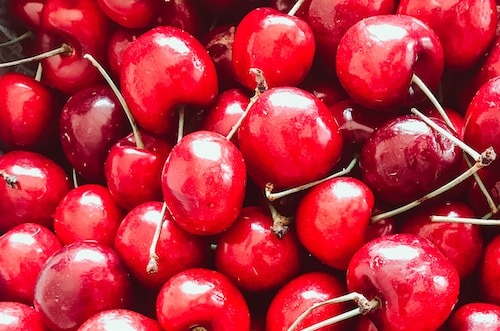
In W34 in the cherry landscape, United States (US) cherries arrived in the Chinese market through maritime transport. Initial trading registered favorable responses, with early sea shipments commanding comparable prices to subsequent air shipments. However, in recent times, the market has experienced price declines, exhibiting significant variations driven by brand and quality disparities. Traders indicated that specific imported cherries possess a limited shelf life, causing rapid shifts in taste and quality. Consequently, prices are plummeting daily in correlation with the storage duration.
The Chilean Fruit Exporters Association (Asoex) projects a potential 20% increase in the refrigerated Chilean cherry cargo export for the upcoming season. This positive projection is due to climatic variables, logistical considerations, and the strategic diversification of both national and international ports that handle Chilean produce. Asoex emphasizes collaborative efforts with shipping companies, cargo operators, and ports to prevent bottlenecks and ensure smooth transportation processes. China stands as a primary destination for Chilean cherries, underscoring the necessity for Chilean ports to align with growing export volumes.
The Chilean cherry cultivation area expanded to 61.6 thousand hectares (ha) in the 2022/23 season. As a result, the 2023/24 cherry harvest is expected to reach 500 thousand metric tons (mt), a notable 6.6% year-on-year (YoY) surge. In the 2023/24 season, Chilean cherry exports are also expected to amount to 444 thousand mt, a significant increase of 7.2% YoY. This increase in cherry exports is contingent upon consistent yields and an expanded planted area.
The United States Department of Agriculture (USDA) indicates that Russia’s cherry imports from Turkey reached 25.17 thousand mt during the 2022/23 season, an increase of 8.88% from the 2021/22 campaign. This indicates that Russia is the largest cherry importer from Turkey in the 2022/23 season. Russian purchases accounted for over 40% of Turkey's cherry exports, amounting to 57.92 thousand mt.
Lastly, Turkey’s cherry production is expected to reach 718 thousand mt in 2023, a slight increase from 2022. Turkey continues to invest in agricultural technology advancements and new cherry variety cultivation, such as Napoleon, Sweetheart, Celeste, Early Lory, Kordia, and Regina. These shifts are in response to surging global demand. Experts anticipate 2023 export results to surpass 2022’s level due to increased production and the favorable exchange rate.
Notably, cherry prices in Turkish lira remained relatively stable in 2023 compared to 2022, but their value in US dollars significantly decreased. This makes Turkish cherry transactions lucrative for buyers using stronger currencies. This situation significantly increased demand, evident in the high availability of Turkish cherries in supermarkets like those in Poland. Turkish cherry exports are projected to rise from 58 thousand mt in 2022 to 77 thousand mt in 2023, while Russia solidifies its position as the primary recipient of these shipments.







